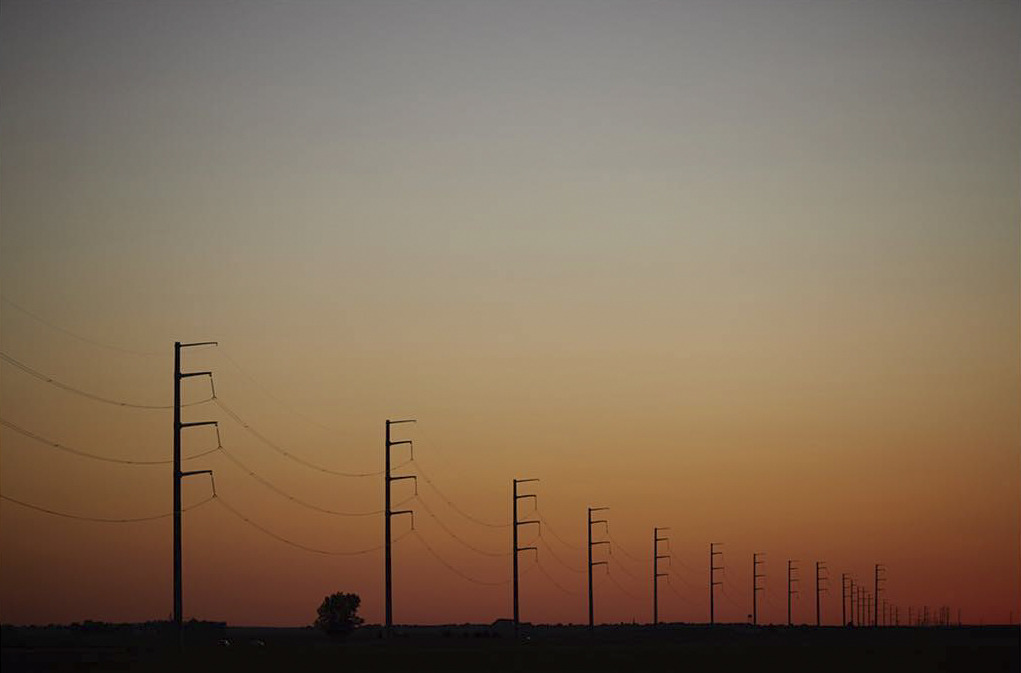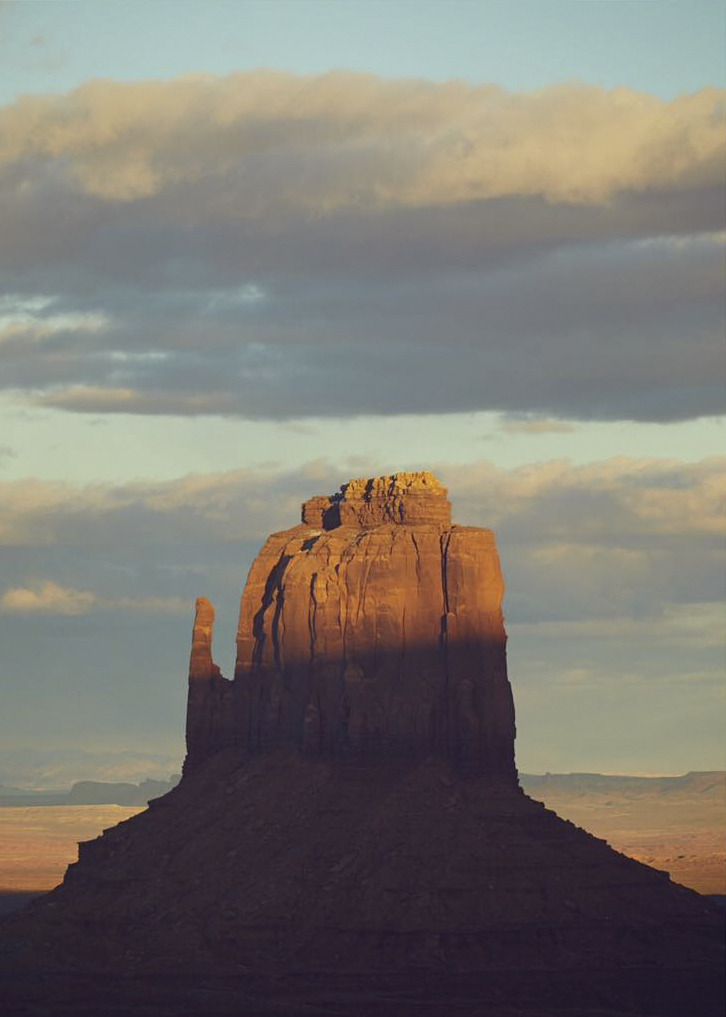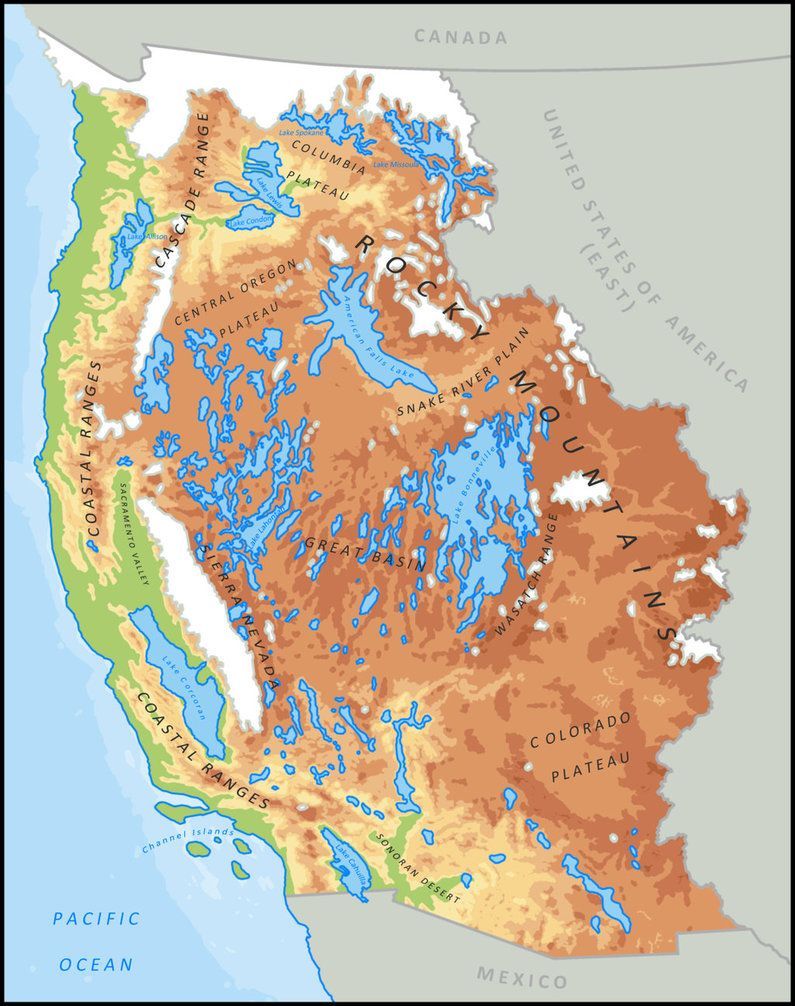




Month: June 2020
Great Lakes of the Pleistocene
in the
Western United States.
New Fiction 2020 – May
Star Wars Jedi Knight: Dark Forces II dev. LucasArts (1997)
I played both Dark Forces and Dark Forces II this month. I’d played Dark Forces on the original PlayStation in what may have been my first time playing a first-person shooter, but I’d avoided the sequel until now. It was a strange experience to play these games after experiencing the relatively advanced level design in Star Wars: Republic Commando and Far Cry Primal.
The first two Dark Forces games released in the mid-90s and are of a certain game design vintage. Levels are entirely composed of labyrinthine corridors with the occasional empty hangar or large room full of machinery or some other set piece. Puzzles are usually focused on obtaining a particular key from a fallen enemy or hitting a series of switches in the correct order. It’s level design geared toward stretching out the experience in an era when players demanded that they be required to put in a certain amount of time in order to justify the cost of these games. I can appreciate the massive scope of some of the maps and the opportunity for exploration they offer, but the graphical limitations of the time means the levels are very often rendered as a series of boxes and small textures stretched across the surfaces of those boxes, tiled ad nauseam. The visual design is just drab and bleak, and sometimes too dark to make out details in the environments, which feels like an intentional mask over the visual issues. While I didn’t feel any negative impact from this in the first game, the sequel left me fatigued and ready to play something less dreary.
The first game featured 2D sprites for much of the art whereas the sequel utilized 3D polygons, and this resulted in one interesting piece of level design that left me wondering if it was intentional. While both games feature the player killing untold numbers of people in their quest to stop the villains, only the first game preserved their bodies at the positions where they died. This means that the stormtroopers the player kills at the start of the level are still lying there upon returning to that area. This creates a kind of breadrcrumb trail of horror, allowing the player to use dead bodies as a means of tracking where they’ve been amid the repetitive corridors. In contrast, the sequel removes the corpse instances as soon as the player is out of sight, likely to ease the load on the number of assets that have to be kept in the computer’s memory. While I’m certain that memory constraints played a part in the sequel’s dead body management, I can’t help but wonder if the designers also realized how grim it can be to backtrack through a level and be faced with the bodies left in their wake. It’s a reminder that War is right there in the title and remains the primary means of interaction for these characters.
Star Wars Jedi Knight: Mysteries of the Sith dev. LucasArts (1998)
I suppose this is the one that broke me. The story in this expansion to Jedi Knight feels more scattered, like loosely connected missions rather than a cohesive narrative. The titular Sith stuff doesn’t show up until the last few levels. In general it’s even more dark and dreary. The levels in the Sith temple are certainly cool, and they even include some Expanded Universe details that I appreciated. It was just a few too many dark corridors and confusing puzzles for me by the end. I originally intended to continue onto the next two Jedi Knight games but will now be taking a break to play some brighter and more lighthearted fare.
It’s funny that I get the distinct feeling of it me when I see or read about a writer portrayed in a story, doing their writing thing, but I’m not a writer. I wanted to be for a long while. It certainly felt like the end-all-be-all of life, back in what, a decade ago? Jesus, it’s been a while, but not even that long. And you know, I bristled against the very minor attention I got even then. I can’t even send text messages now, I get so anxious. I prefer to chat in person, a defined physical space where one can see the tells. It’s easier to end conversations this way. What it has to do with Misery is the movie sparked it all up, made me reflect on those times and everything since. The movie itself, I mean, you know it. It’s good, and horrifying in a few scenes. I think the end is too neat but now that I’ve been brought here to this mood I think it should’ve ended more on the gloomy side. Just lean into it. I bet King’s ending in the book goes that way.
The Descent dir. Neil Marshall (2005)
I used to have dreams about cave creatures emerging to stalk unsuspecting cave visitors, basically exactly what is described in the “Ted the Caver” story with a good dose of Gollum from The Lord of the Rings. I included it as an element of exploring a cave system in an imagined open world video game. Entering the cave would trigger a creature that would stalk the player throughout the world, always just out of sight. I didn’t take it beyond that, but my own forays into caverns and mines cemented the idea in my head as extremely fucking terrifying. Because the thing with caves is, there’s no sound. There’s nothing external to help focus the mind. The black and absence of sound make for a sensory experience designed to nurture whatever terror lingers in the mind. In short, fuck caves. That and the open ocean are terrifying. I guess it’s this sort of understanding about oneself that helped me develop an appreciation of movies like The Descent and a desire to never venture into those deep places again.
The Descent Part 2 dir. Jon Harris (2009)
From the “Ted the Caver” story: “It would seem to me that crawling head first through a tight passage into the darkness is an unnatural thing. Just like crawling up the side of a cliff for recreation. Or jumping out of a perfectly good airplane and floating to the ground. We do these things to satisfy our hunger for adventure. This sub-conscious desire to conquer our own little Everest. As B is fond of saying, ‘Caving is the last opportunity for exploration for the person with modest means.’ True. Just a short drive from just about anywhere in the country is a cave waiting to be explored. Even a cave well known among the general public, can be approached by someone for the first time as an adventure, something new, something to overcome. Because it’s there.” Skip this bad sequel, read “Ted the Caver” instead.
Black Rock dir. Katie Aselton (2012)
This wasn’t quite what I expected. It’s certainly a thriller or horror story about survival, but unlike The Descent it’s much more grounded in reality. It doesn’t apply the same gritty horror filter over it as many films of this sort. Everything from the conflict to the killers’ motives is too real, I suppose, but in an interesting and certainly more feminist way. It asks, “what would you do?”
The Nightingale dir. Jennifer Kent (2018)
I couldn’t help but compare this to The Proposition for the superficial reason that they’re both Western-genre movies set in Australia and Tasmania, respectively, and both set during times when white settlers were demolishing the lives and culture of Aboriginal Australians. These two movies are also particularly blunt in their portrayals of violence by both the authorities and those they oppress, hearkening to stories like Blood Meridian. However, The Nightingale feels more mature in the way the characters are treated. There’s more complexity to them. Kent’s direction clearly guided this movie with more nuance than a lesser director might have, and the “Western” aspect is only there as an element of the time and place. I hate to generalize but I do think that having a woman as director tamps down the masculinity that a man would bring to a movie like this. There’s more thought. There’s also much more consideration toward the struggles of Aboriginal people who were met with a brutal force of white settlement that told them they needed to adapt, but wouldn’t actually allow that when racism was and continues to be so rampant. It may be tough to watch, but it’s worth it.
Star Wars: The Clone Wars – Season 7 (2020)
I must’ve already effused about Clone Wars. It’s probably the best Star Wars narrative to date, especially when couples with Rebels. It just feels… complete. Although it’s well known that Clone Wars was cut short, first by Lucasfilm winding down production, then by Disney’s purchase of Lucasfilm. That means that the final couple of seasons feel a bit rushed. Each of the episode arcs in these seasons is complete in and of themselves, but they don’t feel like they’re leading to a finale. In season 7, the first two arcs certainly feel disconnected from any kind of denouement at first, but then you need to realize that it’s meant to close out the Clone Wars period for the lives of two of the many characters introduced in the series: Rex and Ahsoka Tano. Rex is the representative for all of the sticky questions around the personhood and rights of the men who comprise the clone army, whereas Tano allows the creators to explore the failures of the Jedi that allowed the subsequent rise of the empire. It’s the final four episodes of season 7 that really bring it all to a head, leading into the scenes from Episode III and beyond. It’s a satisfying and thoughtful conclusion to the series, if a bit rushed.
It’s Always Sunny in Philadelphia – Seasons 12-14 (2017-2019)
The appeal of this series is that it’s like Seinfeld, but they’re so much worse. These people are ignorant, self-serving, narcissistic assholes who actively ruin lives. It also feels like the creators use this series to comment on the ineffective nature of liberalism, that is talking a big game but shrinking for any kind of action that would benefit another human being. But it’s a sitcom, so you watch enough of the series and develop an interest in these peoples’ lives. And, you know, it’s still funny, even if it feels uncomfortable when an actor performs in blackface and puts on racist accents. So I’m conflicted. The latest seasons falter more often than not, but a few standout episodes take on a certain sincerity in allowing their characters to be human beings.
American Horror Story: 1984 (2019)
This show often lives up to its reputation in unsatisfying ways. As an anthology series, each season is set in a different time and place, frequently changing the tone and style in which the stories are portrayed. Some seasons are fantastic studies of specific eras in the United States, but some, like the previous Apocalypse season, are just confusing and a little too out there. But they keep getting chances to try new things, and this season certainly felt like a chance to bring it back to something more fun and entertaining. Well, you know, if 80s slasher films and copious murder is fun to you. They also dig into some California history by connecting the story to real serial killers of the 70s and 80s. I don’t really like the obsession over serial killers but it’s interesting to see the idea explored in this what if… format.
New Fiction 2020 – May
Star Wars Jedi Knight: Dark Forces II dev. LucasArts (1997)
I played both Dark Forces and Dark Forces II this month. I’d played Dark Forces on the original PlayStation in what may have been my first time playing a first-person shooter, but I’d avoided the sequel until now. It was a strange experience to play these games after experiencing the relatively advanced level design in Star Wars: Republic Commando and Far Cry Primal.
The first two Dark Forces games released in the mid-90s and are of a certain game design vintage. Levels are entirely composed of labyrinthine corridors with the occasional empty hangar or large room full of machinery or some other set piece. Puzzles are usually focused on obtaining a particular key from a fallen enemy or hitting a series of switches in the correct order. It’s level design geared toward stretching out the experience in an era when players demanded that they be required to put in a certain amount of time in order to justify the cost of these games. I can appreciate the massive scope of some of the maps and the opportunity for exploration they offer, but the graphical limitations of the time means the levels are very often rendered as a series of boxes and small textures stretched across the surfaces of those boxes, tiled ad nauseam. The visual design is just drab and bleak, and sometimes too dark to make out details in the environments, which feels like an intentional mask over the visual issues. While I didn’t feel any negative impact from this in the first game, the sequel left me fatigued and ready to play something less dreary.
The first game featured 2D sprites for much of the art whereas the sequel utilized 3D polygons, and this resulted in one interesting piece of level design that left me wondering if it was intentional. While both games feature the player killing untold numbers of people in their quest to stop the villains, only the first game preserved their bodies at the positions where they died. This means that the stormtroopers the player kills at the start of the level are still lying there upon returning to that area. This creates a kind of breadrcrumb trail of horror, allowing the player to use dead bodies as a means of tracking where they’ve been amid the repetitive corridors. In contrast, the sequel removes the corpse instances as soon as the player is out of sight, likely to ease the load on the number of assets that have to be kept in the computer’s memory. While I’m certain that memory constraints played a part in the sequel’s dead body management, I can’t help but wonder if the designers also realized how grim it can be to backtrack through a level and be faced with the bodies left in their wake. It’s a reminder that War is right there in the title and remains the primary means of interaction for these characters.
Star Wars Jedi Knight: Mysteries of the Sith dev. LucasArts (1998)
I suppose this is the one that broke me. The story in this expansion to Jedi Knight feels more scattered, like loosely connected missions rather than a cohesive narrative. The titular Sith stuff doesn’t show up until the last few levels. In general it’s even more dark and dreary. The levels in the Sith temple are certainly cool, and they even include some Expanded Universe details that I appreciated. It was just a few too many dark corridors and confusing puzzles for me by the end. I originally intended to continue onto the next two Jedi Knight games but will now be taking a break to play some brighter and more lighthearted fare.
It’s funny that I get the distinct feeling of it me when I see or read about a writer portrayed in a story, doing their writing thing, but I’m not a writer. I wanted to be for a long while. It certainly felt like the end-all-be-all of life, back in what, a decade ago? Jesus, it’s been a while, but not even that long. And you know, I bristled against the very minor attention I got even then. I can’t even send text messages now, I get so anxious. I prefer to chat in person, a defined physical space where one can see the tells. It’s easier to end conversations this way. What it has to do with Misery is the movie sparked it all up, made me reflect on those times and everything since. The movie itself, I mean, you know it. It’s good, and horrifying in a few scenes. I think the end is too neat but now that I’ve been brought here to this mood I think it should’ve ended more on the gloomy side. Just lean into it. I bet King’s ending in the book goes that way.
The Descent dir. Neil Marshall (2005)
I used to have dreams about cave creatures emerging to stalk unsuspecting cave visitors, basically exactly what is described in the “Ted the Caver” story with a good dose of Gollum from The Lord of the Rings. I included it as an element of exploring a cave system in an imagined open world video game. Entering the cave would trigger a creature that would stalk the player throughout the world, always just out of sight. I didn’t take it beyond that, but my own forays into caverns and mines cemented the idea in my head as extremely fucking terrifying. Because the thing with caves is, there’s no sound. There’s nothing external to help focus the mind. The black and absence of sound make for a sensory experience designed to nurture whatever terror lingers in the mind. In short, fuck caves. That and the open ocean are terrifying. I guess it’s this sort of understanding about oneself that helped me develop an appreciation of movies like The Descent and a desire to never venture into those deep places again.
The Descent Part 2 dir. Jon Harris (2009)
From the “Ted the Caver” story: “It would seem to me that crawling head first through a tight passage into the darkness is an unnatural thing. Just like crawling up the side of a cliff for recreation. Or jumping out of a perfectly good airplane and floating to the ground. We do these things to satisfy our hunger for adventure. This sub-conscious desire to conquer our own little Everest. As B is fond of saying, ‘Caving is the last opportunity for exploration for the person with modest means.’ True. Just a short drive from just about anywhere in the country is a cave waiting to be explored. Even a cave well known among the general public, can be approached by someone for the first time as an adventure, something new, something to overcome. Because it’s there.” Skip this bad sequel, read “Ted the Caver” instead.
Black Rock dir. Katie Aselton (2012)
This wasn’t quite what I expected. It’s certainly a thriller or horror story about survival, but unlike The Descent it’s much more grounded in reality. It doesn’t apply the same gritty horror filter over it as many films of this sort. Everything from the conflict to the killers’ motives is too real, I suppose, but in an interesting and certainly more feminist way. It asks, “what would you do?”
The Nightingale dir. Jennifer Kent (2018)
I couldn’t help but compare this to The Proposition for the superficial reason that they’re both Western-genre movies set in Australia and Tasmania, respectively, and both set during times when white settlers were demolishing the lives and culture of Aboriginal Australians. These two movies are also particularly blunt in their portrayals of violence by both the authorities and those they oppress, hearkening to stories like Blood Meridian. However, The Nightingale feels more mature in the way the characters are treated. There’s more complexity to them. Kent’s direction clearly guided this movie with more nuance than a lesser director might have, and the “Western” aspect is only there as an element of the time and place. I hate to generalize but I do think that having a woman as director tamps down the masculinity that a man would bring to a movie like this. There’s more thought. There’s also much more consideration toward the struggles of Aboriginal people who were met with a brutal force of white settlement that told them they needed to adapt, but wouldn’t actually allow that when racism was and continues to be so rampant. It may be tough to watch, but it’s worth it.
Star Wars: The Clone Wars – Season 7 (2020)
I must’ve already effused about Clone Wars. It’s probably the best Star Wars narrative to date, especially when couples with Rebels. It just feels… complete. Although it’s well known that Clone Wars was cut short, first by Lucasfilm winding down production, then by Disney’s purchase of Lucasfilm. That means that the final couple of seasons feel a bit rushed. Each of the episode arcs in these seasons is complete in and of themselves, but they don’t feel like they’re leading to a finale. In season 7, the first two arcs certainly feel disconnected from any kind of denouement at first, but then you need to realize that it’s meant to close out the Clone Wars period for the lives of two of the many characters introduced in the series: Rex and Ahsoka Tano. Rex is the representative for all of the sticky questions around the personhood and rights of the men who comprise the clone army, whereas Tano allows the creators to explore the failures of the Jedi that allowed the subsequent rise of the empire. It’s the final four episodes of season 7 that really bring it all to a head, leading into the scenes from Episode III and beyond. It’s a satisfying and thoughtful conclusion to the series, if a bit rushed.
It’s Always Sunny in Philadelphia – Seasons 12-14 (2017-2019)
The appeal of this series is that it’s like Seinfeld, but they’re so much worse. These people are ignorant, self-serving, narcissistic assholes who actively ruin lives. It also feels like the creators use this series to comment on the ineffective nature of liberalism, that is talking a big game but shrinking for any kind of action that would benefit another human being. But it’s a sitcom, so you watch enough of the series and develop an interest in these peoples’ lives. And, you know, it’s still funny, even if it feels uncomfortable when an actor performs in blackface and puts on racist accents. So I’m conflicted. The latest seasons falter more often than not, but a few standout episodes take on a certain sincerity in allowing their characters to be human beings.
American Horror Story: 1984 (2019)
This show often lives up to its reputation in unsatisfying ways. As an anthology series, each season is set in a different time and place, frequently changing the tone and style in which the stories are portrayed. Some seasons are fantastic studies of specific eras in the United States, but some, like the previous Apocalypse season, are just confusing and a little too out there. But they keep getting chances to try new things, and this season certainly felt like a chance to bring it back to something more fun and entertaining. Well, you know, if 80s slasher films and copious murder is fun to you. They also dig into some California history by connecting the story to real serial killers of the 70s and 80s. I don’t really like the obsession over serial killers but it’s interesting to see the idea explored in this what if… format.
Dr. Bashir makes a new friend and is very excited to tell his coworkers about “plain, simple Garak”.
This clip was upscaled to HD with Topaz Video Enhance AI. I should have the entire first season of DS9 available sometime tomorrow. Season 4 is available now!
Dr. Bashir makes a new friend and is very excited to tell his coworkers about “plain, simple Garak”.
This clip was upscaled to HD with Topaz Video Enhance AI. I should have the entire first season of DS9 available sometime tomorrow. Season 4 is available now!

